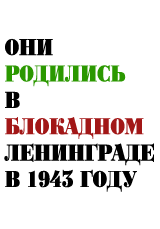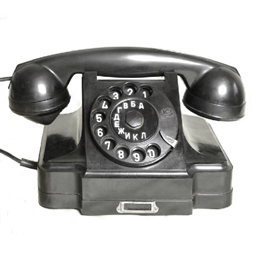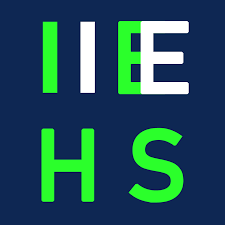This is HTML version of Lunyr Writing Checklist and Lunyr Writing Guidelines
Lunyr Writing Checklist
Introduction
The article contains an introduction
The introduction is no longer than four paragraphs
The first sentence of the introduction defines the subject and importance of the subject
Body
The body sections have headings and subheadings
All headings and subheadings are unique
Headings and subheadings do not redundantly reference the title
Paragraphs
Paragraphs are rarely less than one sentence or more than eight sentences
Paragraphs are not used when charts or lists would be clearer
Charts or lists are not used when paragraphs would be equally clear
Tone
The article is formal and unemotional
The article is impartial
The article is stylistically clear but not stylized in voice
The article is in the third person
The article does not include original humor or subjective statements
Word Choice
The article uses gender-neutral pronouns or the pronouns of the subject
The article does not use many, if any, question or exclamation marks
The writing is concise
“Is” and “Refers to” are correctly used
Content
A reader with no prior knowledge of the subject would understand the article
Abbreviations are first used after the full term they reference
Foreign language words are only used when necessarily connected to the topic
The regional dialect of English (British, American, etc.) used is the one best fitting the topic
Factual information has at least one citation from a reliable source
Fictional information is distinguished as such
Fictional information is only used when writing about subjects that exist in fictional works
Style
Titles appear in title case
Italics are used for titles or emphasis
Italics are not used for quotations
Quotations appear in quotation marks
Parentheses and brackets are appropriately concluded with ending punctuation outside the rightmost instance, unless the entire sentence is contained within
Lists of three or more items use the Oxford Comma appropriately
Slashes are rarely, if ever, used
Contractions are not used
Structure
Introduction
Body Sections
Paragraph Format
Length
Tone
Stylistic Voice
Specifics of Word Choice
Objective Phrasing
Content
Language and Abbreviations
Factual Information
Fictional Information
Style
Titles
Italics
Quotations
Parentheses and Brackets
Oxford Comma
Slashes
Contractions
Structure
Introduction
Start each article with a one to four paragraph introduction that provides a general overview of the topic. Readers should be able to use the introduction to quickly confirm whether or not this is the topic they are hoping to learn about. Introductions should include the most relevant information, similar to the lead section of a news story.
The very first sentence ought to summarize the who/what of the subject and often why that subject is worthy of interest. Generally, the subject of the first sentence will be the title of the article. If the topic of the page is not a subject, but merely descriptive (such as an article on “Medicine of the 1920s,”), the title need not appear verbatim.
Body Sections
Body sections should be denoted by headings. Subheadings should also be employed to add further structure to articles. In fact, articles will and should often have subheadings in order to add clear hierarchy to the presented information.
Subheadings should not include redundant words referencing the article title; one can write “Crash of 2008” rather than “U.S. Stock Market Crash of 2008” in an article about the U.S. stock market. Avoid starting subheadings with numbers, as subheadings are often already numbered, and do not use the same subheading more than once in each article.
Using images within the body is not necessary, but if images are considerably useful in demonstrating a topic, they can be included in the body near the paragraphs they best help illustrate. Video clips, GIFs, and other multimedia should rarely, if ever, be used.
Paragraph Format
Paragraphs in the body sections should be at least two sentences, unless the sentence is of such importance that it justifies such emphasis. Paragraphs should not grow to monstrosity; paragraphs greater than 6-8 sentences can often be broken up to create greater clarity.
Be careful not to use paragraphs when tables or charts of categorical, listed information is more useful. Use of color should be limited to charts, only if a secondary visual aid is deemed necessary. Lists and charts should only be used if paragraphs would not be equally clear. When listing, use bullets rather than numbers unless the item sequence is important or commonly used in other sources.
Length
The length of articles should be at least 500 words. If your article is more than 10,000 words, one should consider breaking your article into articles about the subtopics within.
Tone
The tone of articles should be formal, as well as being impartial, objective, and unemotional. One should write in the third person.
Articles should almost never take a position or suggest a normative value judgement. Rather, if such information is important (e.g., describing that freezers are a “better” place to preserve meat than fridges for long-term storage rather than just pointing out that they can factually preserve the meat longer) one can reference such opinions through phrases like “many experts believe…” or “it is widely thought that…,” although these statements must be supported with citations.
Stylistic Voice
The articles should not be written in a distinguishable style, even given those requirements. Articles and authors should be interchangeable: no reader should be able to identify who wrote an article based on its style.
No humor, subjective statements, or unnecessary primary source quotes should be included. Information should be presented cleanly and unadorned with excessive adjectives or fanciful description. It is not necessary to reiterate information as in some types of academic writing, in which a conclusion or topic sentence often repeat each other.
Specifics of Word Choice
When using pronouns, use gender-neutral constructions. If writing about a person, use their preferred or self-used gender pronouns.
Punctuation using exclamation or question marks should not be used, unless in direct quotation or symbolic representation (such as “n!” for a math formula). Prefacing human subjects with “honorifics” such as “Mr,” “Ms,” or “Dr” is not necessary.
Conciseness is a virtue when writing such articles. Even so, provocative language should be avoided; take enough words to describe accurately, without over- or understatement.
Ensure are words are used correctly. Do not misuse “is,” “refers to,” or “references,” incorrectly: “is” is used for definitions, “refers to” and “references” should be used only for phrases that are distinct from what they reference. (“Baseball refers to a sport involving…” is incorrect; baseball is the sport. “For it’s one, two, three strikes you’re out at the old ball game” references the song “Take Me Out to the Ball Game,” is correct; this lyric is not the name of the song.)
Objective Phrasing
Do not unnecessarily proclaim the value of the subject with phrases like “an important” or “a terrific example…”. Similarly, do not attempt to insert subjective opinion into articles with phrases like “many say…” or “some think…”. In rare cases, it may be appropriate to cite credentialed experts, and their credentials should be noted when describing their opinions.
Content
Though an encyclopedic format may feel familiar, it is important to remember that writing articles requires an active consideration of the reader’s position. As such, enough general, “obvious” information should be included at the beginning of articles or subsections such that a user with no prior background stumbling upon the article would understand it.
Languages and Abbreviations
Abbreviations should appear in parentheses right after the first use of the term to which they refer. If a term is not a proper noun, but has an abbreviation, the full term should appear in lowercase, although the abbreviation is in uppercase. Do not invent abbreviations if the term does not already exist, nor should one translate the order of letters in an abbreviation.
The use of foreign languages is acceptable if the foreign-language word is strongly connected to the topic, but non-English words must be italicized and immediately defined. Pronunciation can be given in terms of the international phonetic alphabet.
When writing about a topic that has strong connection to a particular dialect or spelling tradition, it is acceptable to write the article in that formal English dialect. For example, an article about a British author can use the British spellings of common words. When giving measurements in geographic-centric units such as metric or imperial, include the most relevant metric first and then a conversion to the other unit in a parenthetical.
Factual Information
All factual information should include proper citation. Use common-sense guidelines when determining whether a source is reliable, including its history, publisher information, publication date, author qualifications, and availability.
Fictional Information
Fictional information can be present when writing about fictional subjects, such as works of literature. Take care to distinguish fictional information with declarations of its fiction, like “The fictional town of…”.
Style
Titles
Titles should appear in “title case, or where every word save unimportant words
(generally, articles like “the,” “in”, or “and”) is capitalized. In mid-sentence, attached articles need not be capitalized; it should be the National Football League rather than The National Football League.
Positional titles, like “president” or “queen,” should be lowercased unless referring directly to a specific named subject in the same sentence. Deities’ titles can be capitalized. Philosophies’ titles should be lowercased unless derived from a name, such as “Marxism.”
Italics
Italics can be used for emphasis or to offset titles. They may also be used to distinguish foreign words or unusual words, such as scientific names. Quotations should generally not appear in italics; rather, use quotation marks.
Quotations
Place quotations in quotation marks. Quotations should be used sparingly. Original italicization and boldfacing should be preserved, but all other stylistic elements of quotations ought to be adapted to the article’s type style. Attribute quotations in the text, rather than only in the footnote or citation.
To nest quotations, alternate between single and double quote marks. Block quotations should rarely be used unless the article is dedicated to a written work, but they may be offset in margin and need not include quotation marks.
Parentheses and Brackets
Use of either parentheses or brackets requires that a period be placed outside the punctuation, unless the entire sentence is contained within. Parentheses are used to give additional information; brackets demonstrate edits to the original content.
Oxford Comma
In lists of items, the final comma is the Oxford comma. In general, the Oxford comma should be used, as it adds clarity to ambiguous constructions.
Slashes
The use of “/” should be rare, if ever used, as it can lead to ambiguity around the relationship between items. Similarly, “and/or” must also be avoided unless absolutely necessary.
Contractions
Avoid using contractions in encyclopedic articles, as it can be considered informal. Possessive uses of apostrophes, such as “Franklin’s”, are not contractions, and are thus acceptable.

















Добавить комментарий